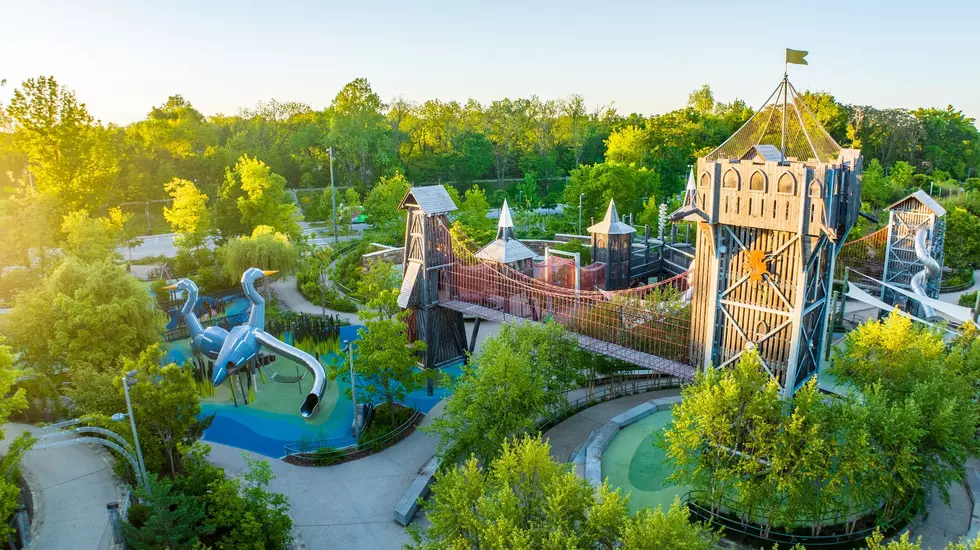
There’s an Old Indian Cemetery In an Oklahoma Atwoods Parking Lot
Due to Oklahoma being one of the youngest states in the union, plus a constant status being issued of it being a "flyover state" via the braindead living on the left and right coasts, it's easy to forget how rich and often weird the history is here in the Sooner State.

This land has belonged to four different countries. Home to five indigenous tribes long before Spain's conquistadors laid claim to and later abandoned it. They were seeking the legendary "City of Gold." They even left a little gold behind that is still to be found.
England claimed it as a part of their seizure of the Carolinas. The French halfway settled it soon after through their trapping and fur trade later. Spain once again laid claim to Louisiana to prevent the English from taking it by force and subsequently gave it back to the French. Then the United States bought it up in the Louisiana Purchase. Oklahoma's history is just as old and interesting as any of the states in New England.
Of course, you should be somewhat familiar with the general knowledge of Oklahoma after the Louisiana Purchase, how it became Indian Territory, the Trail of Tears, America's indigenous relocations, etc... and that's where the story of Oklahoma's parking lot Indian Cemetery begins.
On the west of Tulsa, there's a little town called Sand Springs. It's quite literally nothing to look at in the grand scheme of things. A small town comparative to, well, if Lawton was Tulsa, Sand Springs would be Indiahoma... but the origin story is a unique one.
In the early 19th century (that would be the 1800's) the first recorded "settlement" was that of a small band of Cherokee. The only reason this record exists is because it caused quite a controversy. While those few Cherokee were residing there, the land technically belonged to the Creek Nation via US treaty. It took some forty years to squash the dispute but the treaty was ultimately upheld at a federal level and once again became unequivocally Creek land.
Seeking to protect the land, a Confederate Army Luitenant and member of the Creek Tribal Nation named Thomas Adams was given a blessing to settle the land for himself to grow and raise a family. Due to the clear stream that provided drinking water to the settlement area, he named it Oktain Eukiwa - AKA - Sand Springs.
Thomas Adams cultivated the land and raised an enormous family before dying in 1886. His extended family, for the most part, settled their own little corners of the sprawling claim. It was life as normal on the frontier until just after Oklahoma entered statehood.
With the influx of settlers via the seven Oklahoma land runs, the establishment of Oklahoma as a state, and the discovery and instant success of the oil industry, the whole of Northeast Oklahoma was rich beyond the average wildest dream.
One day oil baron named Charles Page sought out a place to build with his riches and the area we know now as Sand Springs is where he started to build his charitable empire.
Born poor in Wisconsin, self-made-millionaire Charles Page had struck it rich in the oil fields of Tulsa. Remembering how hard his mother had struggled to raise his family in poverty, the self-proclaimed philanthropist sought out a piece of ground to establish his own orphanage in order to share his wealth and give back to the people.
As he bought up land in the area, he eventually acquired Adams original claim. The family named just one condition of the purchase and Page agreed... The Adams family cemetery could never be disturbed.
Soon after Page purchased the land he quickly made good on his promises. He built a sprawling fully-funded orphanage and named it The Sand Springs Home in honor of the Adams family. Someone donated a few small herds of deer, antelope, and bison which quickly became a park opened free to the public under the name Sand Springs Park.
Charles Page even built a free amusement park with a carousel, Ferris wheel, roller coasters, and other attractions including a proper zoo that remained free and open to the public throughout his life. Page even built a free rail line between his park and the city of Tulsa so more people could enjoy his charitable vision.
While there are a few subtly different versions of the story at this point, the gist and common tale is... as Charles Page aged and began to see his life winding down, suffering from cancer, the question soon became, "Who will end up with my land and what will they do with it?"
Not wanting it to fall into the hands of anyone that would see it destroyed or marred in the search for oil and gas or any other minerals, Charles Page decided to incorporate a city around his orphanage and park.
Taking inspiration from the seven historic Oklahoma land runs, he offered any and everyone their own piece of free land if they'd move there and settle it. As people moved in, Sand Springs became a city with one concrete condition in the charter... The Adams family cemetery was not to be disturbed.
While both Adams and Page are long gone to the pages of history, Sand Springs remains to this day as does the Adams family cemetery.
While it's hard to believe in this day in age that a century-old agreement would be upheld in the face of affecting progress, the city has stood by that original promise.
If you were to pop into the Atwoods Shopping Center at the corner of Adams Road and Charles Page Boulevard, in the middle of the parking lot still stands the Tullahassee Creek Indian Cemetery - the last resting place of most Adams of the era.
For all intents and purposes, it's the only known shopping center cemetery in America and among one of the known oldest in Oklahoma.
While there is more to the finer details of this story, including more on the Adams family prior to Oklahoma's statehood, the story of this cemetery stands out beyond the various records. I think you'll agree, it's quite a tale from one of America's "historically devoid and unimportant fly-over states," isn't it?
Lawton's Highest Rated Margarita's
Check out the most expensive house for sale in Lawton!
15 More Amazing Southwest Oklahoma Hole-In-The-Wall Eats
Oklahoma Mansions You Can Tour
More From KLAW-FM









